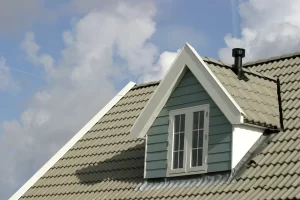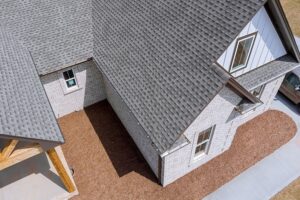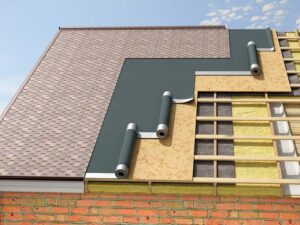The Environmental Benefits of Reroofing with Sustainable Materials
When considering a home renovation, the roof is one of the most critical elements to evaluate. Not only does it protect the structure from the elements, but it also plays a significant role in energy efficiency and sustainability. Choosing to reroof with sustainable materials can have long-term environmental benefits, reducing waste, improving energy consumption, and decreasing the overall carbon footprint of a home. As more homeowners become conscious of their environmental impact, reroofing with eco-friendly materials presents an excellent opportunity to make a lasting difference.
Reducing Waste and Promoting Recycling
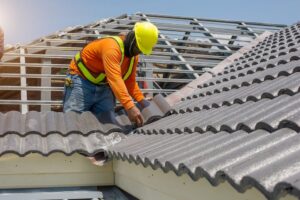 Traditional roofing materials, such as asphalt shingles, have a relatively short lifespan and contribute significantly to landfill waste. When old roofing materials are removed and discarded, they often end up in landfills, where they take decades to decompose. Sustainable roofing materials, on the other hand, prioritize recyclability and longevity. Metal roofing, for instance, is often made from recycled materials and can be recycled again at the end of its life cycle. Other options, such as clay tiles and reclaimed wood shingles, further minimize the environmental burden by repurposing natural resources. click here for more information.
Traditional roofing materials, such as asphalt shingles, have a relatively short lifespan and contribute significantly to landfill waste. When old roofing materials are removed and discarded, they often end up in landfills, where they take decades to decompose. Sustainable roofing materials, on the other hand, prioritize recyclability and longevity. Metal roofing, for instance, is often made from recycled materials and can be recycled again at the end of its life cycle. Other options, such as clay tiles and reclaimed wood shingles, further minimize the environmental burden by repurposing natural resources. click here for more information.
Additionally, some manufacturers now offer programs that allow homeowners to recycle their old roofing materials instead of discarding them. This reduces the strain on landfills and promotes a more circular economy in the construction industry. By selecting materials that can be reused or recycled, homeowners contribute to a more sustainable construction process.
Enhancing Energy Efficiency and Reducing Carbon Emissions
One of the most significant environmental benefits of reroofing with sustainable materials is improved energy efficiency. Traditional roofing materials often absorb heat, causing indoor temperatures to rise and increasing the need for air conditioning. In contrast, sustainable materials are designed to reflect sunlight and regulate indoor temperatures more effectively.
Cool roofing materials, such as metal roofs with reflective coatings or light-colored clay tiles, help deflect solar heat, reducing the energy needed to cool a home. Green roofs, which involve planting vegetation on a specially designed roofing system, provide additional insulation and reduce heat absorption. This not only lowers energy costs but also reduces carbon emissions associated with excessive energy use.
Another eco-friendly option is solar roofing, which integrates solar panels directly into the roof design. By generating clean, renewable energy, solar roofing helps reduce reliance on fossil fuels, further decreasing a home’s carbon footprint. Investing in energy-efficient roofing solutions allows homeowners to contribute to a cleaner environment while enjoying long-term savings on utility bills.
Supporting Sustainable Resource Management
Many traditional roofing materials are sourced from non-renewable resources, which can contribute to deforestation, mining degradation, and other forms of environmental harm. Sustainable roofing materials prioritize ethical sourcing and renewable resources to minimize ecological impact.
Bamboo roofing, for example, is an excellent choice due to the rapid growth rate of bamboo plants. Similarly, wood shingles sourced from sustainable forestry practices ensure that trees are replenished at the same rate they are harvested. Clay and slate tiles are naturally occurring materials that do not require intensive manufacturing processes, reducing pollution and energy consumption.
By selecting roofing materials that are sourced responsibly, homeowners can support sustainable industries that prioritize environmental conservation. This approach encourages businesses to adopt greener practices, ultimately benefiting the planet as a whole.
Improving Air and Water Quality
Roofing choices have a direct impact on both air and water quality. Traditional roofing materials can release harmful chemicals into the environment over time, especially as they degrade. Sustainable options, such as clay, metal, and green roofs, do not emit harmful pollutants, making them a healthier choice for both homeowners and the surrounding ecosystem.
Green roofs, in particular, offer additional environmental benefits by improving air quality and managing stormwater runoff. The vegetation on green roofs absorbs carbon dioxide, filters pollutants from the air, and produces oxygen. Additionally, these roofs help absorb rainwater, reducing runoff that can carry pollutants into local waterways.
By investing in eco-friendly roofing, homeowners can play a role in reducing air and water pollution while creating a healthier living environment.
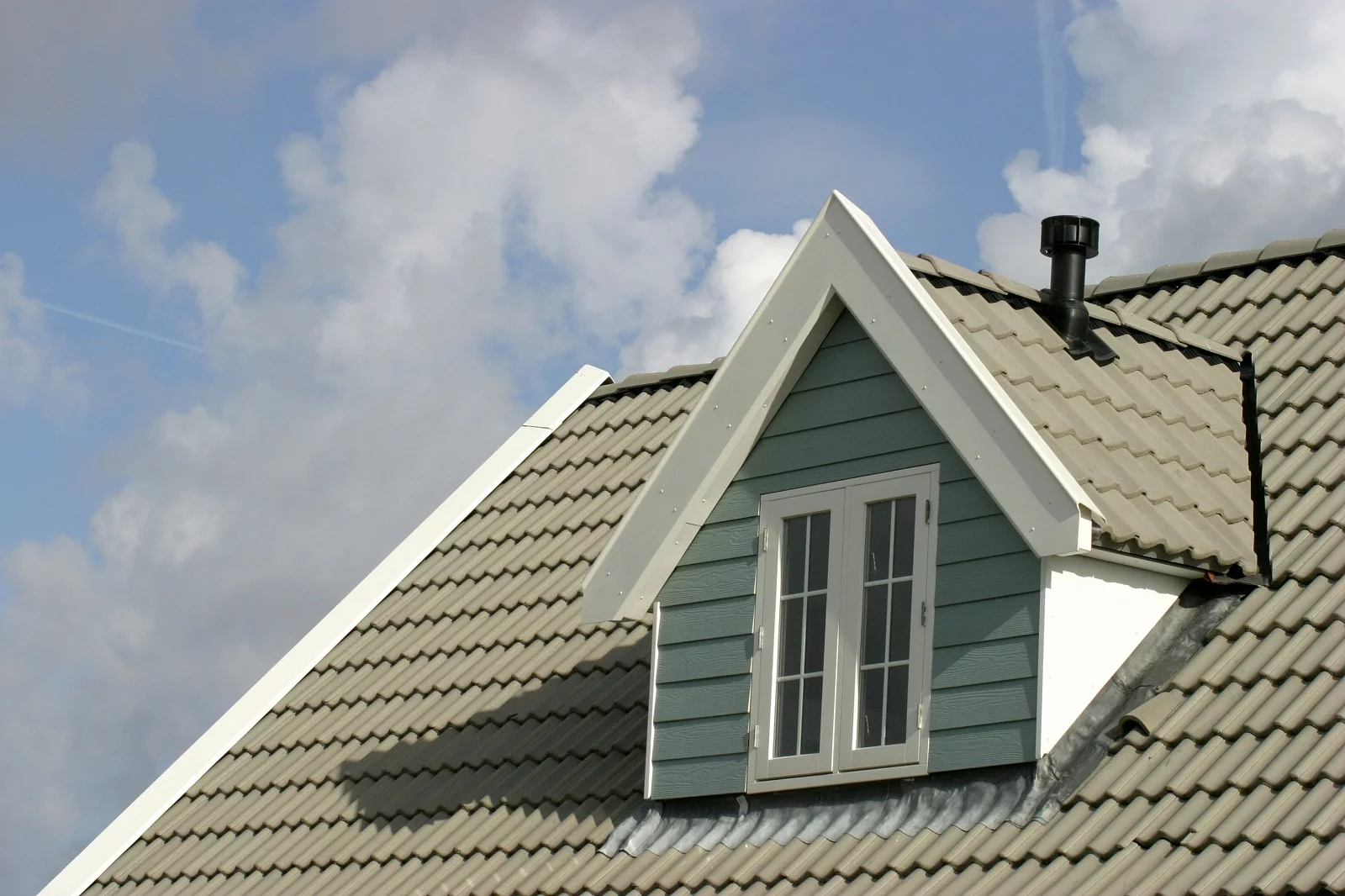
Long-Term Durability and Reduced Maintenance
Sustainability is not just about the materials used but also about longevity. Traditional asphalt shingles may need to be replaced every 15 to 20 years, leading to increased waste and resource consumption. In contrast, many sustainable roofing options are designed to last significantly longer.
Metal roofing, for example, can last 50 years or more with minimal maintenance. Clay and slate tiles are known for their exceptional durability, often lasting for generations. Even recycled rubber roofing, made from repurposed tires, offers a long lifespan while diverting waste from landfills.
By choosing long-lasting roofing materials, homeowners can reduce the frequency of roof replacements, ultimately decreasing the environmental impact of manufacturing, transportation, and disposal. This contributes to a more sustainable approach to homeownership, where fewer resources are consumed over time.
The Ultimate Guide to Choosing the Right Asphalt Shingles for Your Home
Selecting the right asphalt shingles for your home is an important decision that affects both the appearance and longevity of your roof. With various styles, colors, and materials available, it can be overwhelming to determine which option best suits your needs. Understanding the different types of asphalt shingles, their benefits, and key factors to consider will help you make an informed choice.
Understanding Asphalt Shingles
Asphalt shingles are one of the most popular roofing materials due to their affordability, durability, and ease of installation. They consist of a fiberglass or organic base coated with asphalt and granules, providing protection against harsh weather conditions. The granules also contribute to the shingle’s color and help shield the roof from ultraviolet rays.
There are three main types of asphalt shingles:
Three-tab shingles are the most traditional option, featuring a flat, uniform appearance. They are cost-effective but tend to have a shorter lifespan compared to other types.
Architectural shingles offer a more dimensional look, mimicking the appearance of wood or slate. They are thicker, more durable, and provide better resistance to wind and weather.
Luxury shingles are the highest-quality asphalt shingles, designed to replicate the look of premium materials such as natural slate or cedar shakes. They offer superior durability and aesthetic appeal but come at a higher cost.
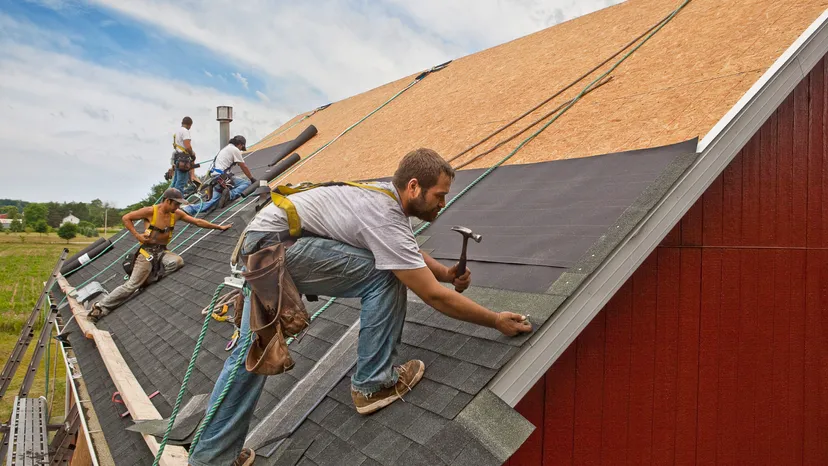
Factors to Consider When Choosing Asphalt Shingles
Selecting the right asphalt shingles involves more than just picking a color. Several important factors should be taken into account to ensure you choose a product that meets your home’s needs.
Durability and Lifespan
The longevity of asphalt shingles varies depending on their type and quality. Three-tab shingles typically last between 15 to 20 years, while architectural shingles can last 25 to 30 years. Luxury shingles offer the longest lifespan, often exceeding 30 years. Investing in high-quality shingles can save you money on repairs and replacements in the long run.
Climate Considerations
Your local climate plays a crucial role in determining the best type of asphalt shingles for your home. If you live in an area prone to heavy winds or storms, opt for shingles with high wind resistance ratings. In regions with intense sunlight, UV-resistant shingles help prevent premature deterioration. For colder climates, shingles with superior insulation properties and ice dam protection are ideal.
Aesthetic Appeal
The roof significantly impacts your home’s overall appearance, so choosing shingles that complement your exterior is essential. Consider the architectural style of your home when selecting colors and textures. Lighter-colored shingles reflect sunlight and help keep the house cooler, while darker shingles absorb heat and may be more suitable for colder climates. Many manufacturers offer color-matching tools to help homeowners visualize how different shingles will look on their homes.
Cost and Budget
Asphalt shingles vary widely in price, depending on the type and brand. Three-tab shingles are the most budget-friendly option, making them suitable for homeowners looking for an economical choice. Architectural shingles offer a balance between affordability and durability, while luxury shingles are the most expensive but provide superior aesthetics and performance. It is essential to consider both the upfront cost and long-term value when selecting shingles for your home.
Installation and Maintenance
Proper installation is key to ensuring the longevity and performance of your asphalt shingles. Hiring a professional roofing contractor with experience in asphalt shingle installation can help prevent common issues such as leaks and premature wear. Regular maintenance, including inspections and cleaning, will also extend the life of your roof. Removing debris, checking for damaged shingles, and ensuring proper attic ventilation are essential steps in roof maintenance.
The Benefits of Investing in a New Roof for Your Home
A home’s roof is one of its most critical components, providing protection, energy efficiency, and aesthetic appeal. While replacing a roof is a significant investment, it offers numerous benefits that enhance both the short-term comfort and long-term value of a property. Understanding the advantages of installing a new roof can help homeowners make an informed decision when considering home improvements.
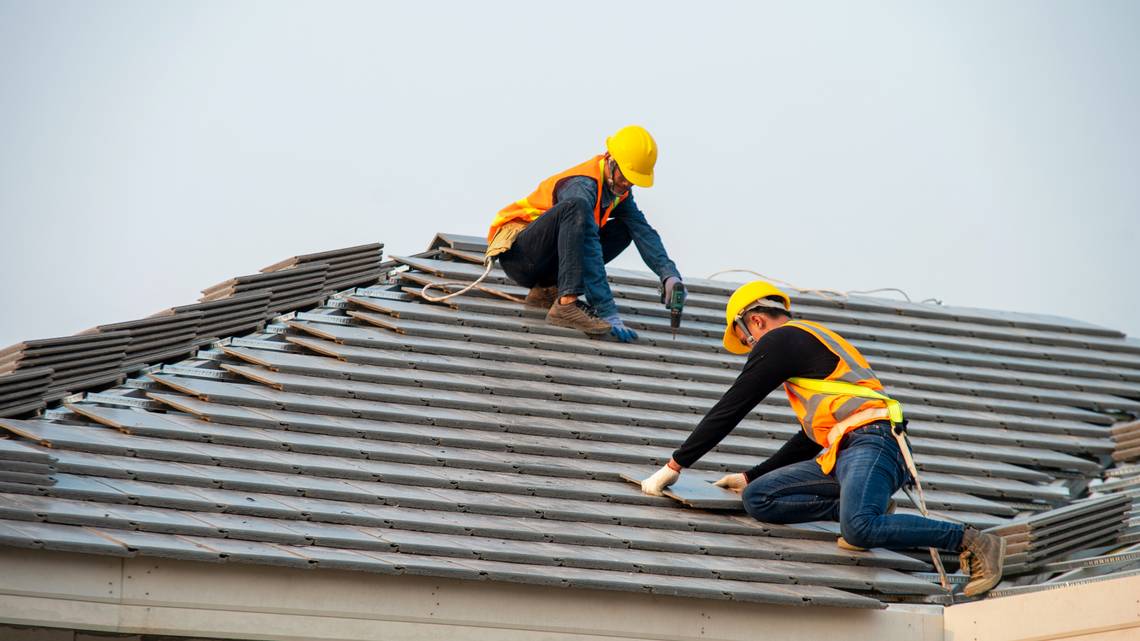
Enhancing Protection and Safety
A deteriorating roof can lead to serious structural problems if not addressed in time. Leaks, mold growth, and water damage can compromise the integrity of a home, leading to costly repairs. A new roof eliminates these risks, ensuring that the house remains safe from weather-related damage. Stronger materials and modern installation techniques provide superior resistance to harsh conditions, including heavy rains, strong winds, and extreme temperatures.
Beyond weather protection, a new roof also enhances fire safety. Older roofs may contain outdated or worn-out materials that are more susceptible to fire hazards. Upgrading to fire-resistant materials significantly improves the overall safety of a home, reducing risks and offering greater peace of mind.
Boosting Energy Efficiency
An aging roof often contributes to energy loss, leading to higher heating and cooling costs. Gaps, poor insulation, and outdated materials allow heat to escape during winter and increase indoor temperatures during summer. A newly installed roof with modern energy-efficient materials provides better insulation, helping to regulate indoor temperatures more effectively.
Reflective roofing materials can also reduce heat absorption, making a home more energy-efficient. By decreasing reliance on heating and cooling systems, homeowners can enjoy lower utility bills while also reducing their environmental impact. Investing in a roof with proper ventilation further enhances energy efficiency by preventing excessive moisture buildup and maintaining a balanced temperature inside the home.
Increasing Property Value
A new roof adds significant value to a home, making it a worthwhile investment for those considering selling their property. Potential buyers are often attracted to homes with updated features, and a new roof reassures them that they will not have to deal with costly repairs or replacements in the near future.
A well-maintained roof also enhances the overall curb appeal of a property. Aesthetic upgrades, such as modern roofing materials and color options, can dramatically improve the home’s exterior appearance. Whether planning to sell or simply improve the home’s look, a new roof adds a polished and well-maintained impression that increases its desirability in the real estate market.
Reducing Maintenance and Repair Costs
Older roofs require frequent repairs, which can quickly become costly. Regular patching, fixing leaks, and addressing storm damage can add up over time. Investing in a new roof reduces these ongoing maintenance expenses, providing homeowners with a durable and low-maintenance solution.
Modern roofing materials are designed to withstand the elements, extending the lifespan of the roof and minimizing the need for frequent repairs. By choosing high-quality materials, homeowners can enjoy long-term savings and avoid the inconvenience of constant upkeep.
Improving Indoor Comfort
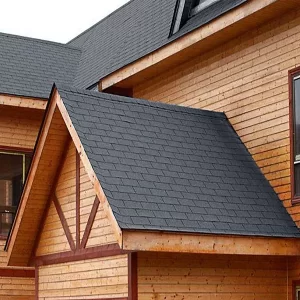 A new roof contributes to a more comfortable indoor environment by eliminating drafts, leaks, and temperature fluctuations. Improved insulation and ventilation ensure that each room remains at a consistent and comfortable temperature, regardless of the season.
A new roof contributes to a more comfortable indoor environment by eliminating drafts, leaks, and temperature fluctuations. Improved insulation and ventilation ensure that each room remains at a consistent and comfortable temperature, regardless of the season.
Additionally, a well-installed roof helps to reduce noise pollution. Homes located in busy areas or near airports can benefit from modern roofing materials that absorb sound, creating a quieter and more peaceful living space. This added comfort enhances the overall quality of life for homeowners and their families.
Taking Advantage of Modern Roofing Technology
Advancements in roofing technology have led to more durable, eco-friendly, and aesthetically pleasing options for homeowners. New materials such as asphalt shingles with enhanced durability, metal roofing with reflective coatings, and sustainable options like solar tiles provide innovative solutions that cater to different needs and budgets.
Roofing manufacturers also offer warranties that extend for decades, giving homeowners confidence in the longevity of their investment. These warranties provide additional protection and assurance that the roof will continue to perform efficiently for years to come.
